In this article:
Your facial skin is one of the most delicate parts of your body and should be cared for accordingly. Thus, it is important to research a product’s ingredients, pH levels, and effects before using it on your face.
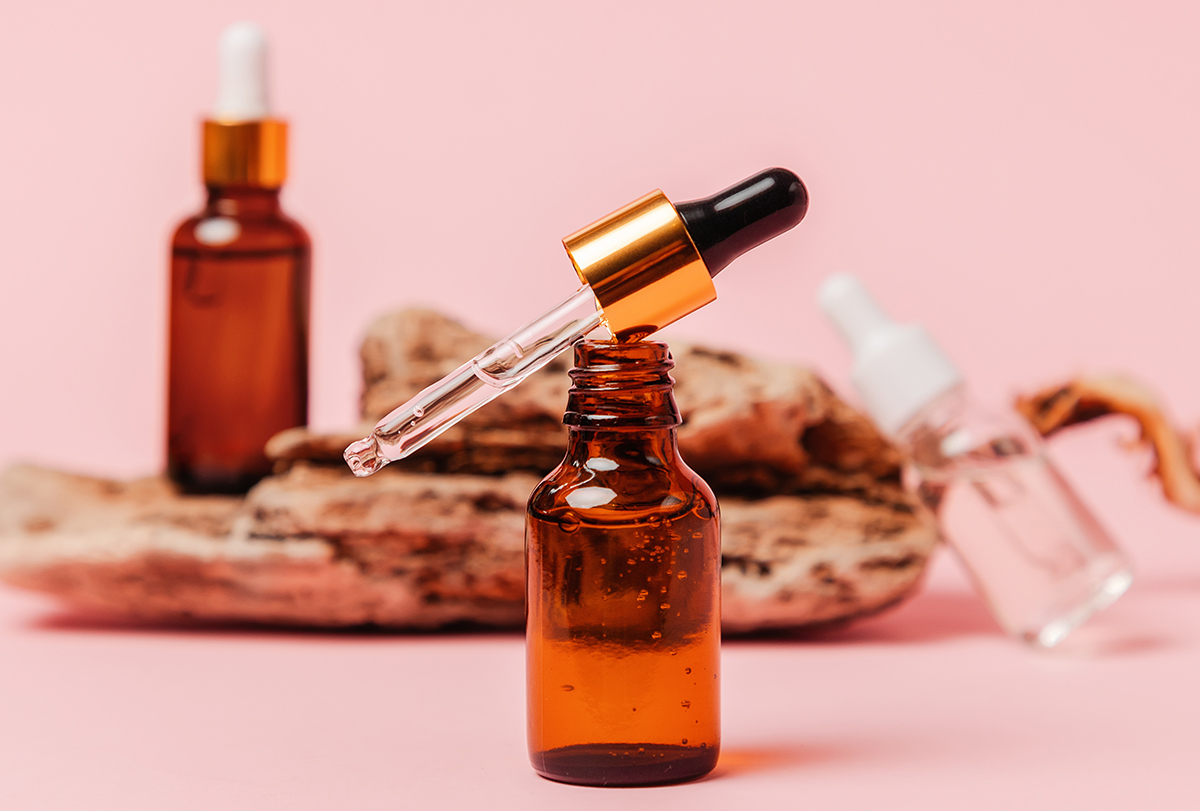
Glycolic acid and vitamin C are both natural compounds that are very beneficial for the skin. They have an acidic nature that matches the skin’s pH (4.5 to 5.0) and can treat or prevent various issues such as acne, wrinkles, and skin discoloration.
However, it is not advisable to use both at the same time.
Glycolic acid is a colorless, odorless form of alpha hydroxy acid. (1) It is naturally found in sugarcane extracts and is a cost-effective and effective remedy for a number of skin issues.
Glycolic acid has been proven to treat and prevent acne, sun damage, wrinkles, and pigmentation and promote skin exfoliation. (2)(3)
Vitamin C, also known as ascorbic acid, is not naturally produced by the human body and has to be obtained via diet. It is a vital nutrient required by the body and plays a major role in immunity, skin health, and bone health, among others.
Vitamin C can be found abundantly in many fruits and vegetables such as citrus fruits, broccoli, kale, strawberries, spinach, kiwi, and pineapple. When vitamin C is applied topically, it is recommended to opt for products that have a 10%–20% concentration. (4)
Can Glycolic Acid and Vitamin C Be Used Together?
The short answer is no. Glycolic acid and vitamin C are both highly acidic compounds. They can mess with the skin’s natural pH levels (4.5 to 5.0) when used together and can lead to skin irritation and rashes.
Although there are no formal studies to back this hypothesis, most skin care experts would advise against mixing individual glycolic acid and vitamin C serums. (4) However, you can also use them at different times of the day – for instance, vitamin C in the morning and glycolic acid at bedtime.
Also, there are medicated serums containing both glycolic acid and vitamin C, which are safe as they are carefully formulated in safe concentrations to boost each ingredient’s effects.
How to Use Vitamin C and Glycolic Acid on Skin
Here is a brief list of the different ways glycolic acid and vitamin C can be used on the skin:
Vitamin C
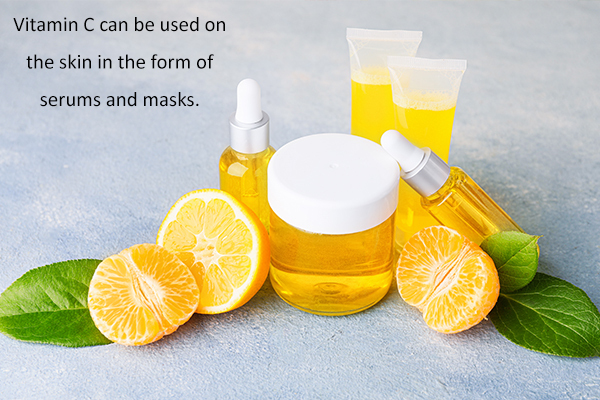
- Vitamin C serum: You can use a 10%–20% vitamin C serum on your skin every night or twice or thrice a week to rejuvenate and repair damaged skin cells. Wash your face with a mild cleanser, dry it, and then apply a few drops of the serum to your skin. Massage it gently until fully absorbed.
- Vitamin C masks: Many kinds of face masks contain vitamin C as an active ingredient. You can buy peel-off masks, sheet masks, or overnight sleeping masks, or you can make your own. Grind a couple of dried orange peels, add a teaspoon of plain yogurt, and mix them well for an easy and effective vitamin C mask. Apply the mask evenly to your face and wash it off after 15 minutes.
Vitamin C is safe for people suffering from acne. However, avoid using it if you have very sensitive skin or active eczema.
Glycolic acid
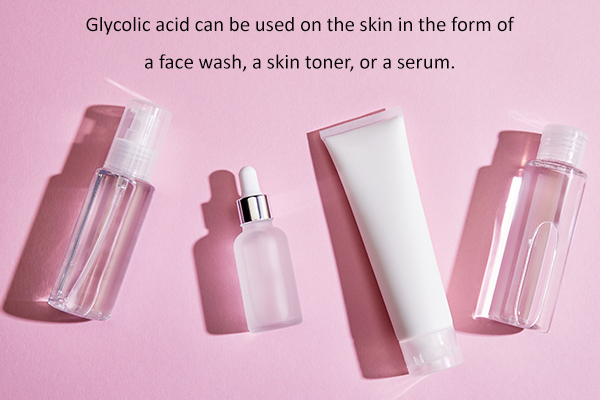
- Glycolic acid face wash or toners: Face washes, facial cleansers, and toners containing glycolic acid as an active ingredient are readily available nowadays. These formulations help exfoliate and refresh your facial skin when used regularly. Make sure to use them every day or thrice weekly for best results.
- Glycolic acid serum: Glycolic acid serums are the most efficient way to use glycolic acid on your skin. Apply the serum evenly to your face after washing it.
Glycolic acid helps get rid of signs of skin aging, hyperpigmentation, and lifeless complexion.
Note:
- It is best to use glycolic acid at night as it should not be exposed directly to sunlight.
- Always use a moisturizer after applying glycolic acid as it tends to dry up your skin.
- Avoid the use of glycolic acid in children below 16 years of age.
Benefits of Glycolic Acid
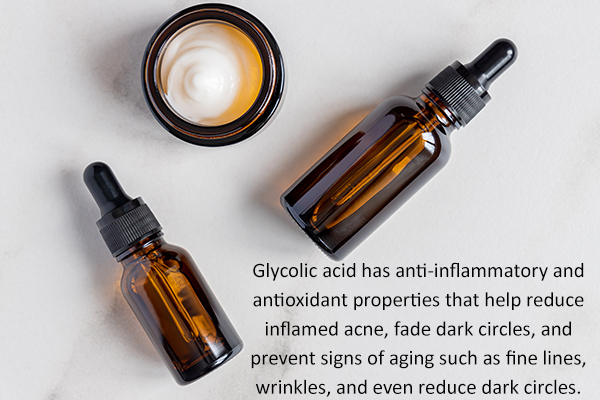
Glycolic acid offers several benefits for the facial skin, including the following:
- Glycolic acid exhibits anti-inflammatory properties that can help reduce inflamed acne. (5)
- The antioxidants in glycolic acid help prevent signs of aging such as fine lines and wrinkles and even reduce dark circles.
- Glycolic acid rejuvenates the skin, making your complexion clearer and brighter by facilitating skin exfoliation.
Side Effects of Glycolic Acid
The most common side effects of glycolic acid include:
- Skin discoloration (1)
- Irritation and inflammation
- Red patches on the skin (dermatitis)
- Mild skin peeling
- Mild burns when overused
Benefits of Vitamin C
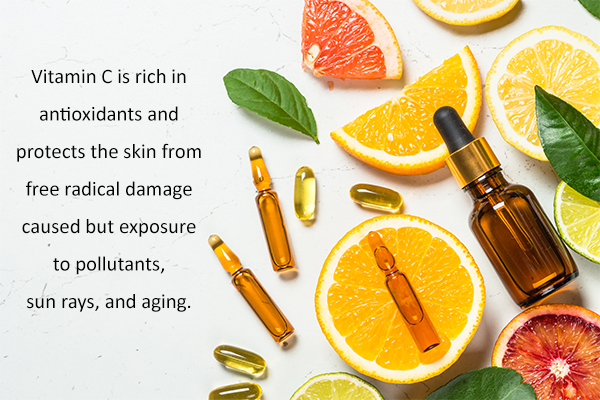
Some of the major benefits of using vitamin C on your facial skin include the following:
- Vitamin C is rich in antioxidants and protects the skin from free radical damage caused by exposure to pollutants, sun rays, and aging.
- It also helps increase collagen production in the skin to prevent and treat skin aging, wrinkles, and fine lines.
- Vitamin C helps get rid of skin hyperpigmentation by inhibiting melanin synthesis.
Vitamin C is an essential nutrient for skin health. Thus, vitamin C deficiency is easily noticeable in many people as it causes skin problems such as bruising, rough skin, and delayed wound healing. For example, most smokers tend to have these skin issues as they are vitamin C deficient. (6)
Side Effects of Vitamin C
Although side effects of vitamin C are rare, some people may experience the following reactions:
- Skin irritation and redness when overused
- Dry skin
- Allergic reactions such as rashes, itching, and swelling (4)
What Concentrations of Glycolic Acid and Vitamin C Are Recommended for Skin Care?
The ideal concentration of both glycolic acid and vitamin C is usually between 10% and 20%. Do not use a concentration higher than that unless recommended by a dermatologist. (4)
Final Word
Glycolic acid and vitamin C are both very beneficial for the skin. If you are using glycolic acid and vitamin C from separate bottles, it’s not advised to mix them. Rather, apply them at different times.
If a single formulation contains, both glycolic acid and vitamin C, then the product is safe to use. Always perform a patch test before using either of the two on your skin. Consult a doctor immediately if you think you are having an allergic reaction.
- Was this article helpful?
- YES, THANKS!NOT REALLY


